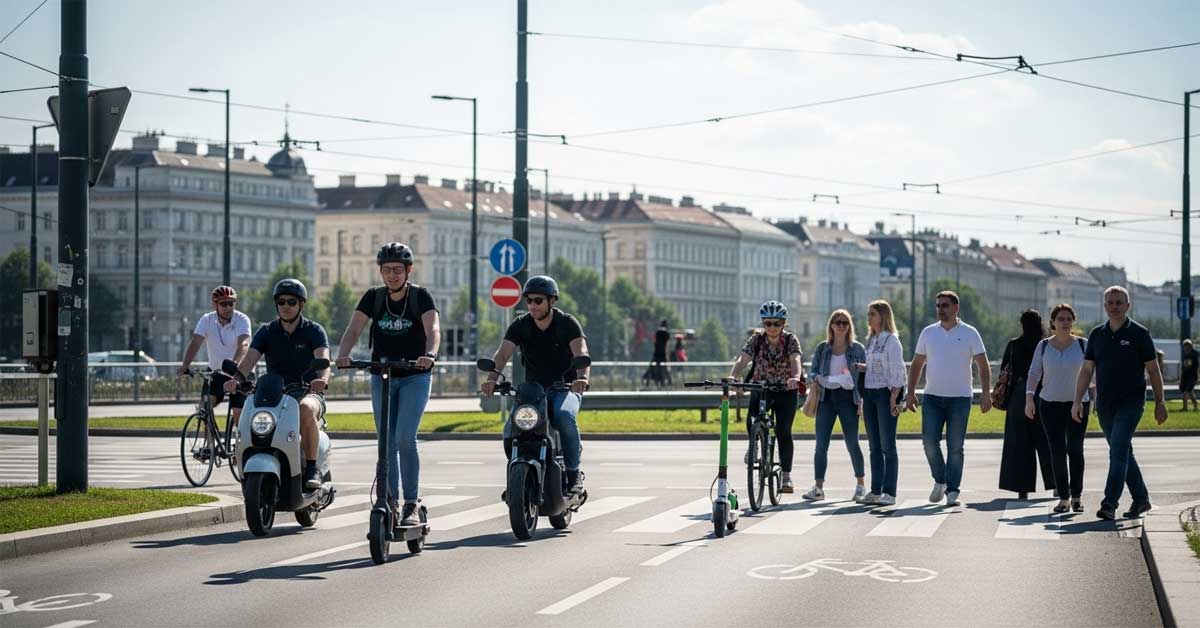

21 July 2025  Growing conflict on the bike lanesIn Austria, e-scooters and e-mopeds are classified differently depending on speed and motor output. Stand-up e-scooters with a maximum of 25 km/h and up to 600 watts are treated like bicycles. But anything faster or more powerful becomes a "moped" under the law. Despite this, both types currently share the same infrastructure: the bike lane.Cities like Paris, Copenhagen, and Berlin have already taken steps to address this issue. Paris banned shared e-scooters after a referendum. In Sweden and the Netherlands, fast or motorized scooters are banned from bike lanes altogether. Vienna is now trying to follow suit. Accidents on the rise, public demand for changeAccording to a press release issued today by the Viennese Vehicle Trade (Wiener Fahrzeughandel) via the Austrian Press Agency (OTS), the situation in Vienna is becoming untenable. A recent focus inspection by Vienna police in June 2025 caught 277 violators—some riding at extreme speeds. One e-moped was clocked at 87 km/h in a zone where 25 km/h is the legal limit.The number of people injured in e-scooter-related accidents has also skyrocketed in Austria: 7,500 hospital-treated injuries in the past year alone, a 25% increase. Since 2019, injury numbers have multiplied sixfold. (Source) Stephanie Ernst, chairwoman of the Viennese vehicle trade, highlights not only the dangers but also the legal loopholes: Many of these vehicles are neither insured nor registered, making prosecution almost impossible. A Marketagent survey confirms that the public supports stricter regulations—70% want helmet and insurance mandates and better enforcement. City government's call for federal actionVienna's Mobility City Councillor Ulli Sima has made it clear: "E-mopeds must get off the bike lanes." Along with experts from TU Wien and representatives from ÖAMTC and ARBÖ, the city has now drafted concrete proposals to amend the Road Traffic Regulations (Straßenverkehrsordnung, StVO) and the Motor Vehicles Act (Kraftfahrgesetz, KFG). These changes would exclude fully motorized vehicles like e-mopeds from the bicycle category and move them legally to the road—where other mopeds belong.The issue lies with federal legislation. In Austria, both the StVO and KFG are federal laws. A prior push to change them failed under the previous Green transport minister. But Sima and her partners are optimistic: "We are already in good talks with the responsible ministry and hope that our proposal will lead to a faster change in the interest of safety on the bike lanes," said Sima. (Source) Reform overdue—will federal lawmakers act?Vienna is not alone in its call for reform. The city, together with major mobility organizations and experts, has done its homework. The safety of thousands of cyclists and pedestrians is at stake. Other European cities have already enacted similar laws. Now Austria must catch up. But because the legal authority lies at the federal level, it's up to the national government to act.The question remains: How long will they wait? Image: This symbolic AI-generated picture shows a group of people using various forms of urban transportation. In the foreground, individuals on electric scooters, e-mopeds, and a bicycle share the road with pedestrians at a crosswalk. Photo: © Fashion.at generated with Imagen, Google AI Studio |